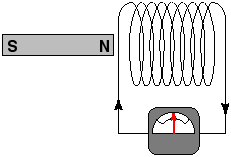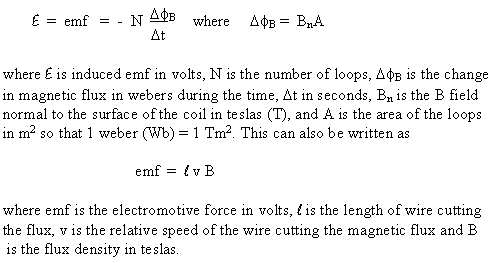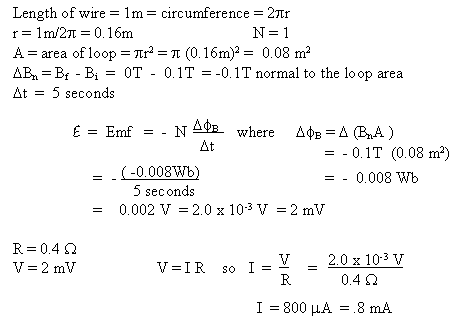Explain the Electromagnetic Induction
The force exerted on an electric charge moving in a magnetic field leads to the idea of magnets being able to produce electricity as well as voltaic cells, the early batteries. The connection between electricity and magnetism is what makes possible motors, generators, and the whole field of alternating current (AC)--which happens to power anything you plug into the wall, such as computers, stereos and television sets.

In 1831, two physicists, Michael Faraday in England and Joseph Henry in the United States, independently discovered that you could produce an electric current by moving a magnet inside a loop of wire - no battery needed. In fact, any situation which causes relative motion between a conductor and a magnetic field will cause a voltage. The conductor can move or the magnet can move, or both can move as long as they don't move at the same speed in the same direction (no relative motion in this case).
The amount of current induced can be computed using the voltage generated in a given situation given by Faraday's Law:
The induced voltage in a coil is proportional to the product of the number of loops and the rate at which the magnetic field changes within these loops.

Example 1 - A 1m long circular loop of wire, with a small break at one point, moves from an area with a uniform magnetic field of 0.1T perpendicular to the area of the loop to an area with no magnetic field in 5 seconds. What is the induced Ε? If the wire has a resistance of 0.4 Ω , what current would flow if the circular loop is closed?

If we want to be able to figure out the direction of the induced current, we need to look into the meaning of the negative sign in Faraday's Law, which is important enough to be a law of its own - Lenz's Law. See the next section, and then see if you can figure out which direction the induced current should flow after trying the examples. (It should flow counterclockwise.)